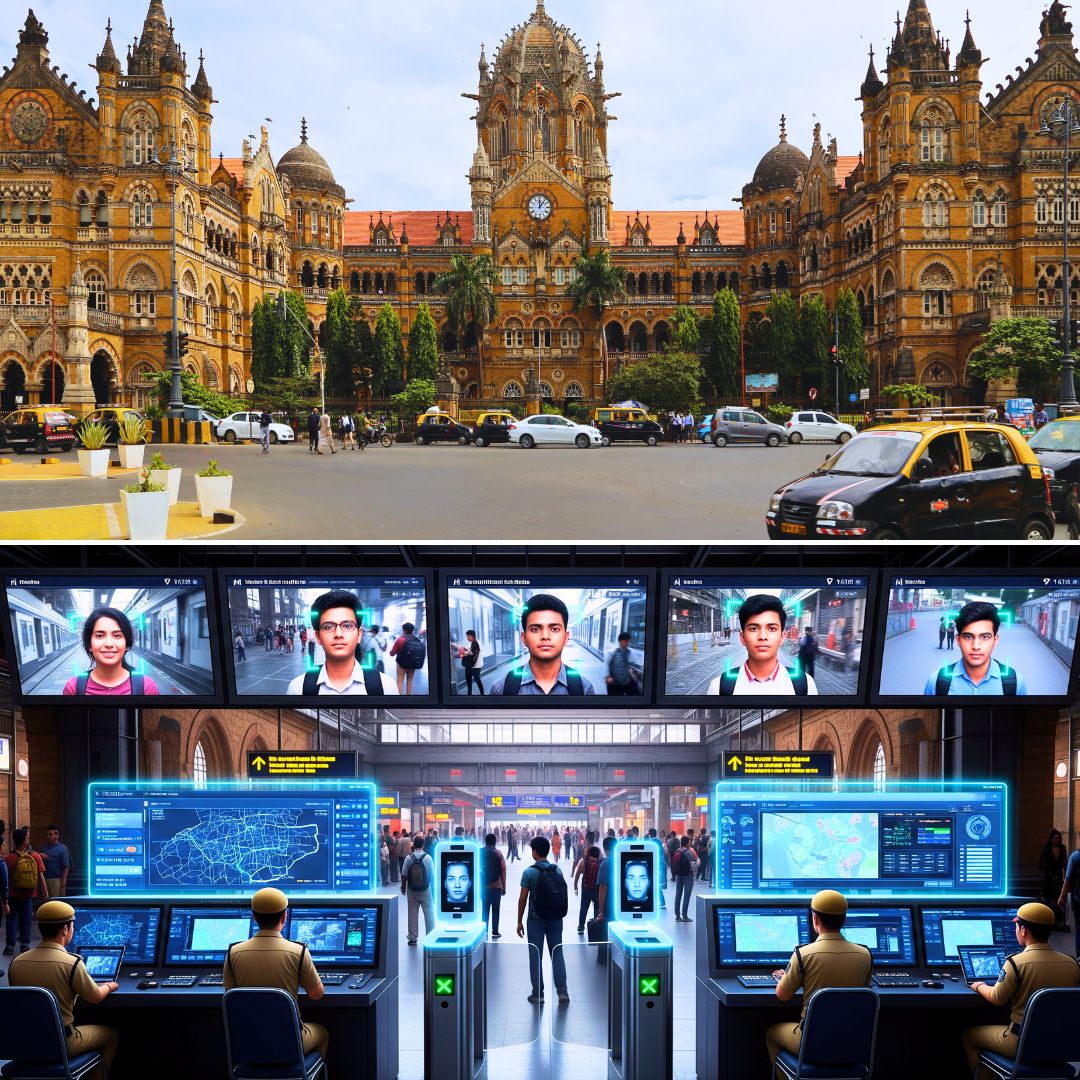Seven major railway stations across India—including Mumbai’s Chhatrapati Shivaji Maharaj Terminus (CSMT), New Delhi, Bengaluru, Chennai, Howrah, Ahmedabad, and Pune—are poised to receive cutting-edge AI-powered facial recognition technology aimed at enhancing passenger security and curbing crimes, especially against women.
The Union Ministry of Home Affairs (MHA) recently apprised the Supreme Court that these systems will be integrated with the National Database on Sexual Offenders, which now houses over 2 million profiles, enabling authorities to detect and prevent potential threats effectively.
This initiative forms a key part of the expanded “Safe City” project, which has already begun upgrading surveillance infrastructure in metros like Delhi, Bengaluru, and Hyderabad with AI analytics, drone surveillance, and smart lighting, aiming to create safer transit hubs and urban spaces.
Securing Transit Hubs Through Advanced AI Integration
As one of India’s busiest stations, Mumbai’s CSMT manages over 3 million passengers daily; similarly, New Delhi Railway Station caters to half a million commuters each day. These vast crowds create a challenging environment for law enforcement to maintain safety.
Under the new AI initiative, high-definition CCTV cameras will be upgraded with facial recognition software capable of cross-referencing live images against the extensive National Database on Sexual Offenders. An MHA affidavit highlighted that the system will help identify known offenders as they enter transit hubs, track suspicious behaviour in real-time, and expedite locating missing persons.
Officials emphasise that, “When combined with emergency communication systems, smart lighting that adjusts to scenes, drone surveillance, and automatic number plate recognition, this technology will form an integrated armour against crime at critical transport points.” The ministry also reassured that strict privacy and data protection policies will be implemented to prevent misuse of personal information.
Context and Drivers Behind the Safe City Initiative
The AI upgrade comes in response to continuing concerns over safety and specific incidents that have exposed gaps in urban surveillance. Data presented before the Supreme Court by the Women Lawyers’ Association revealed that crimes against women in India have grown from 58.8 per 100,000 population in 2018 to 66.4 in 2022, with conviction rates remaining low.
Recognising these challenges, the MHA has highlighted that the Integrated Emergency Response Management System (IERMS), which includes panic buttons and help desks, is functional at 499 of the 983 major railway stations nationwide.
Nonetheless, evolving threats require more advanced tools. The “Safe City” project is a multi-layered strategy utilising AI video analytics, drone surveillance, smart lighting, and vehicle tracking to proactively prevent crimes and improve emergency responsiveness. Already operational in several metros, this latest phase extends these technologies explicitly to crucial railway hubs — vital spaces where millions gather daily.
The Logical Indian’s Perspective
The deployment of AI-based facial recognition technology at major railway stations embodies a proactive step toward making public spaces safer—particularly for women and vulnerable groups. At the same time, there are valid apprehensions about privacy, data security, and the ethical use of surveillance technologies.
The Logical Indian advocates for a balanced approach where innovation serves all citizens’ safety without infringing on fundamental rights or enabling discriminatory practices. Transparency, community engagement, and regular oversight must accompany this technological leap to build public trust. We firmly believe that sustainable security is founded on empathy and respect alongside advanced tools.











